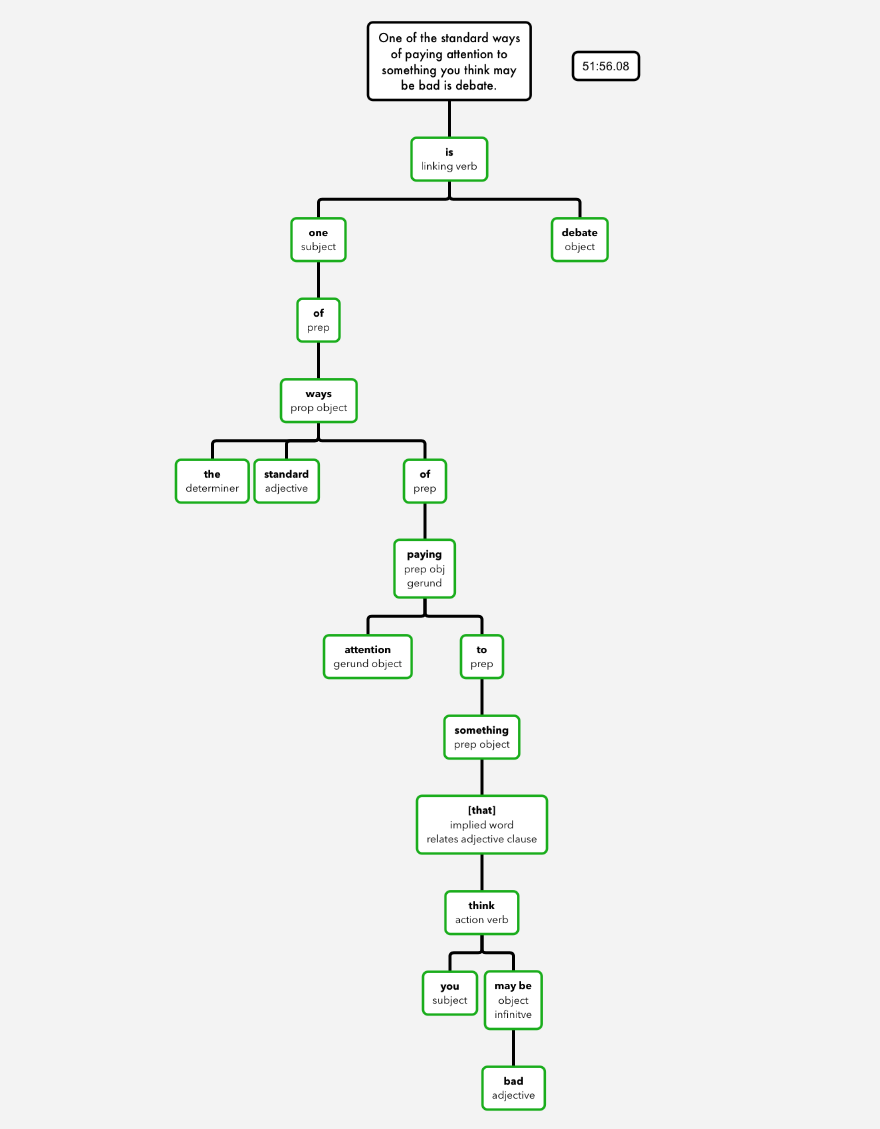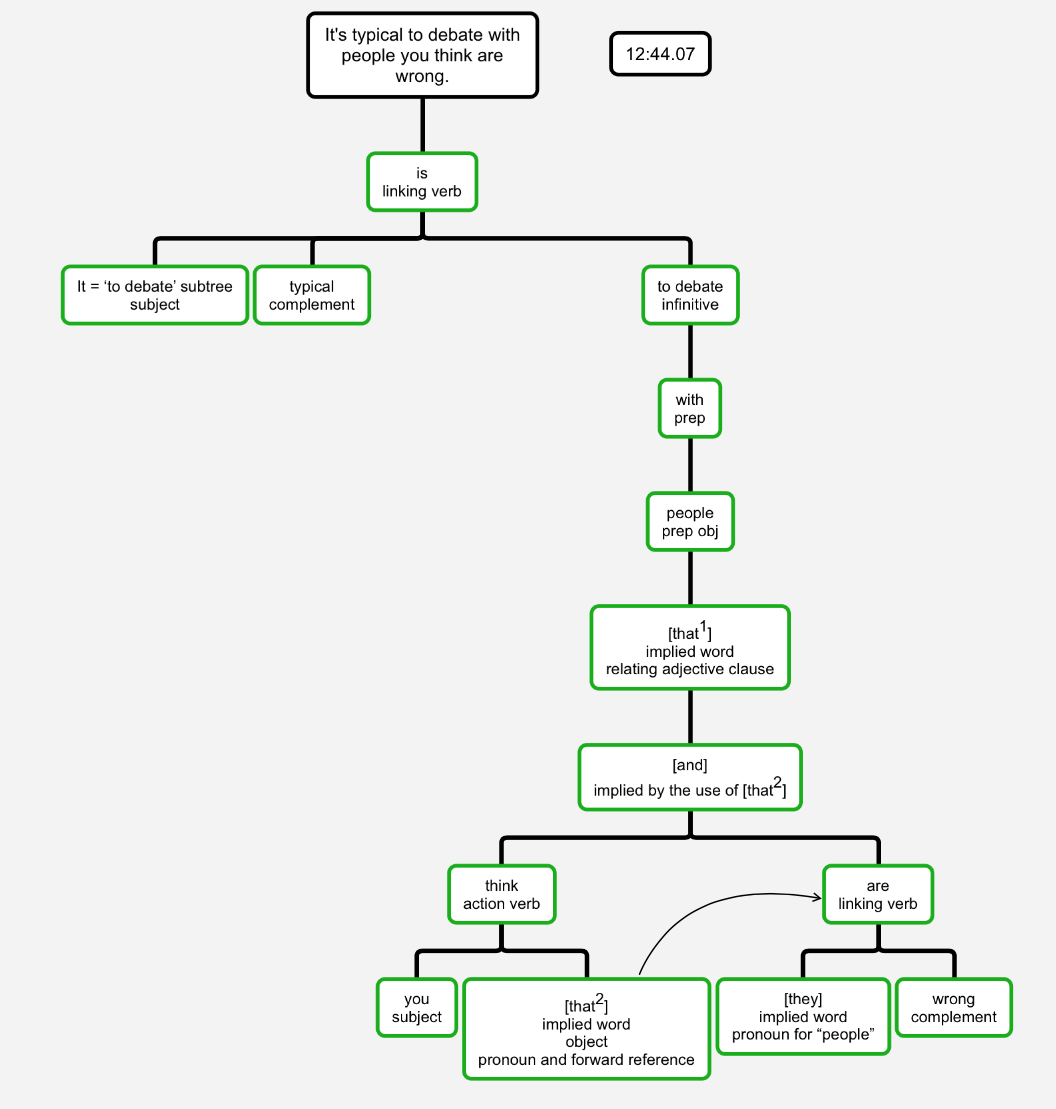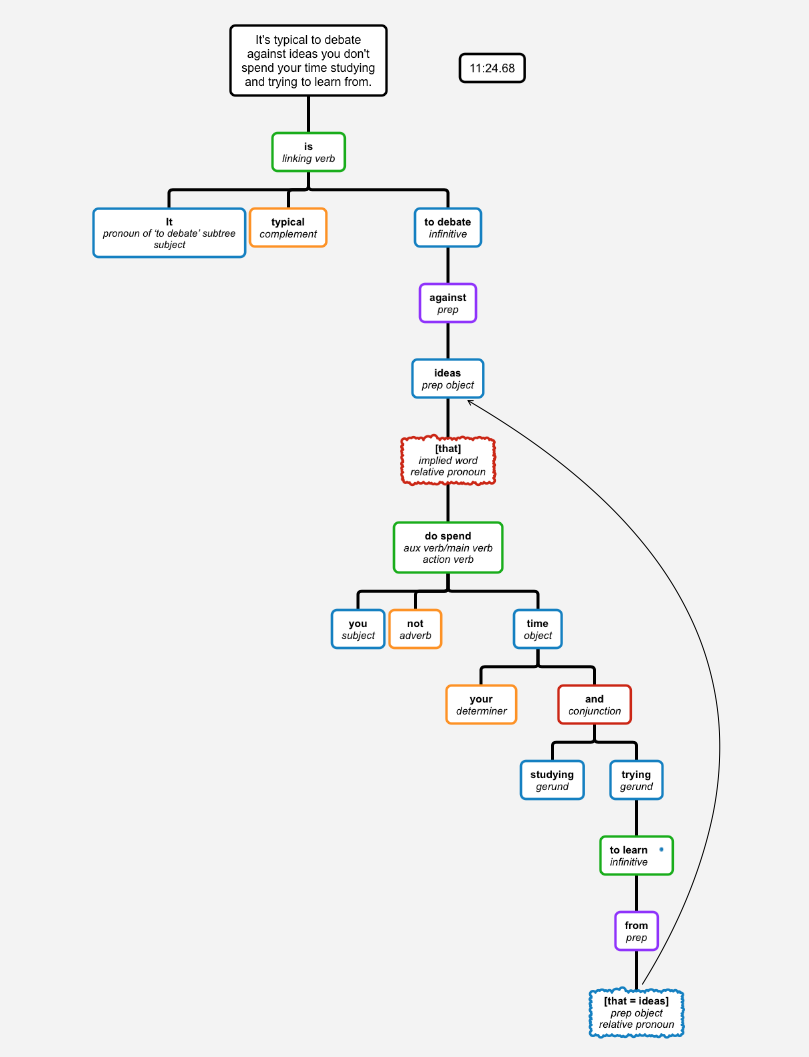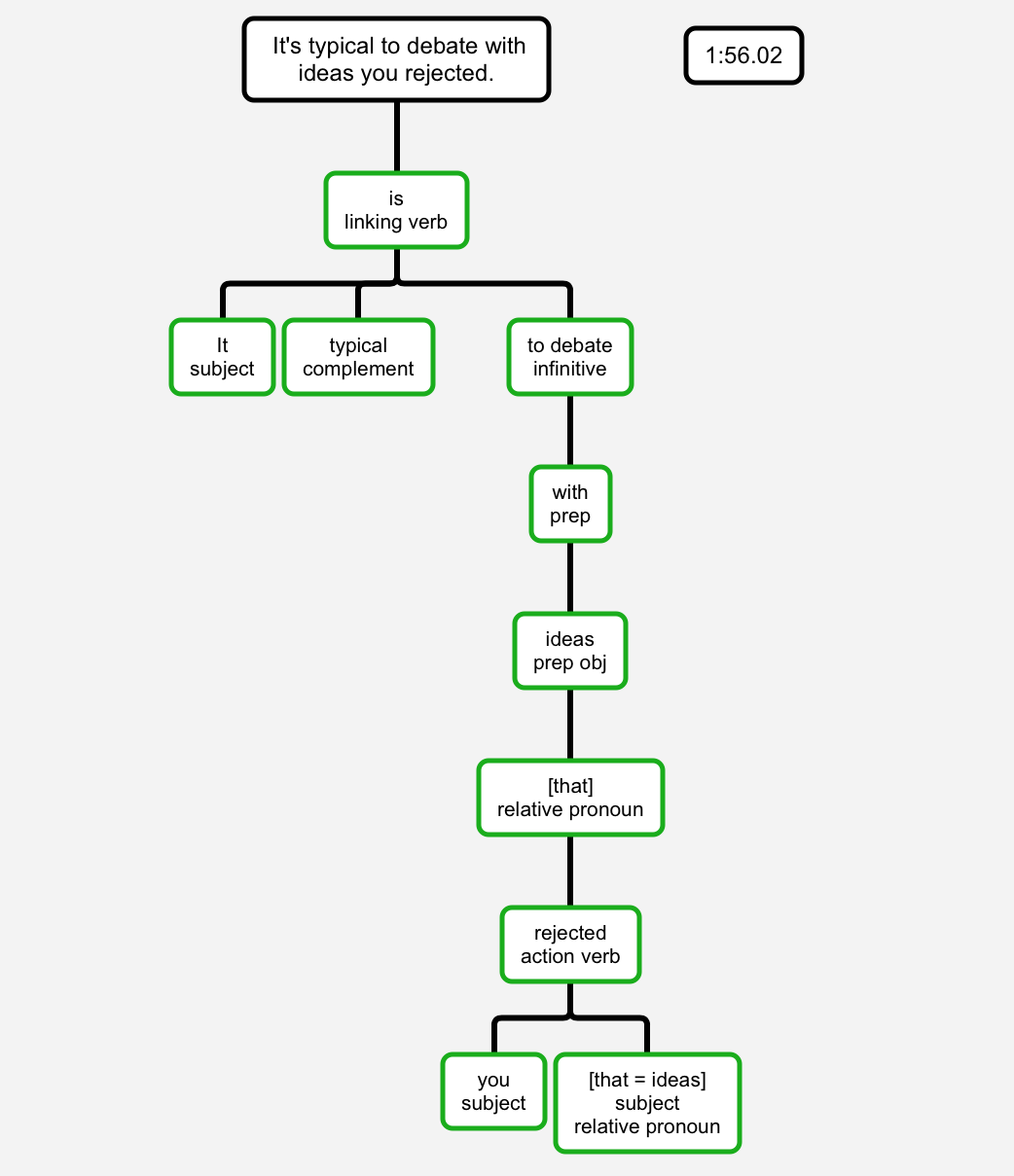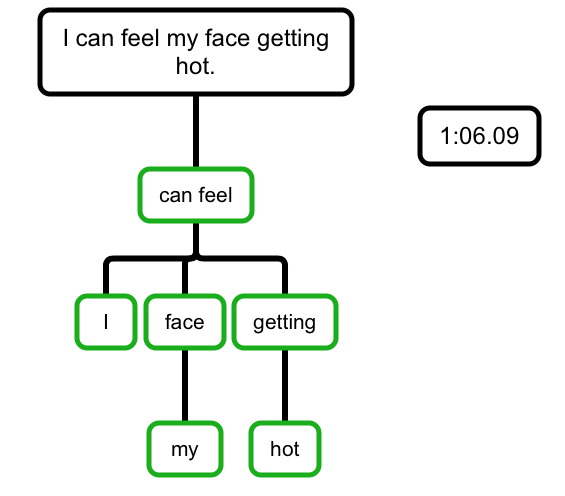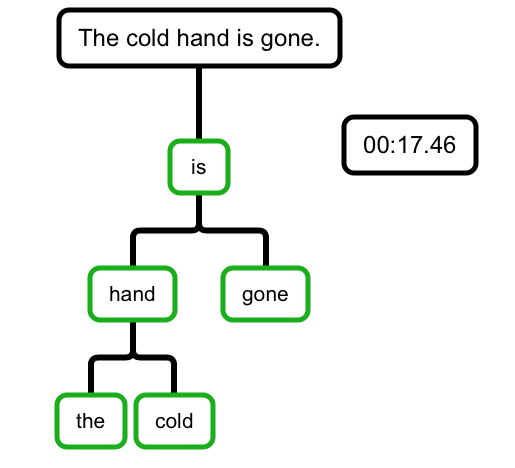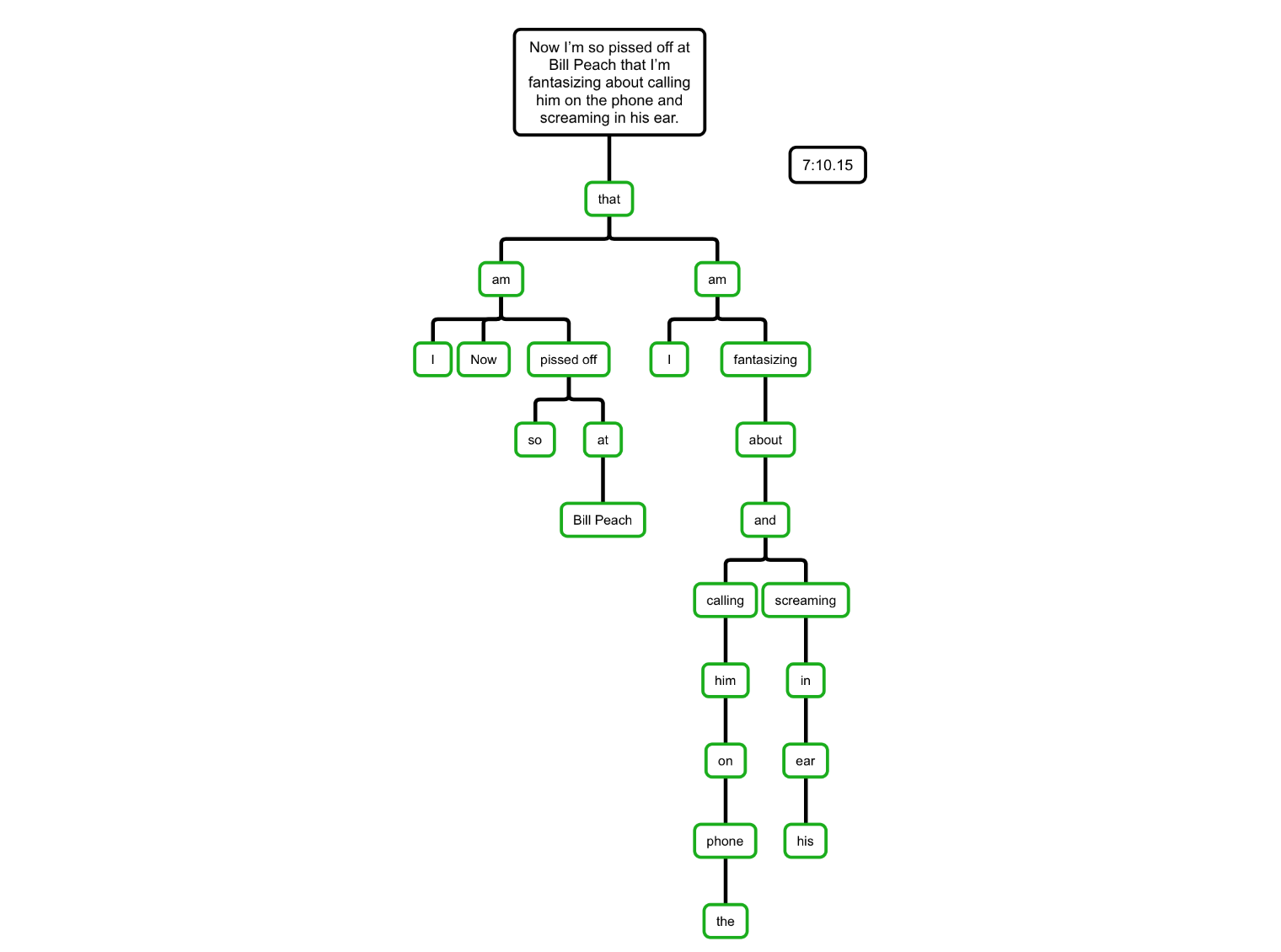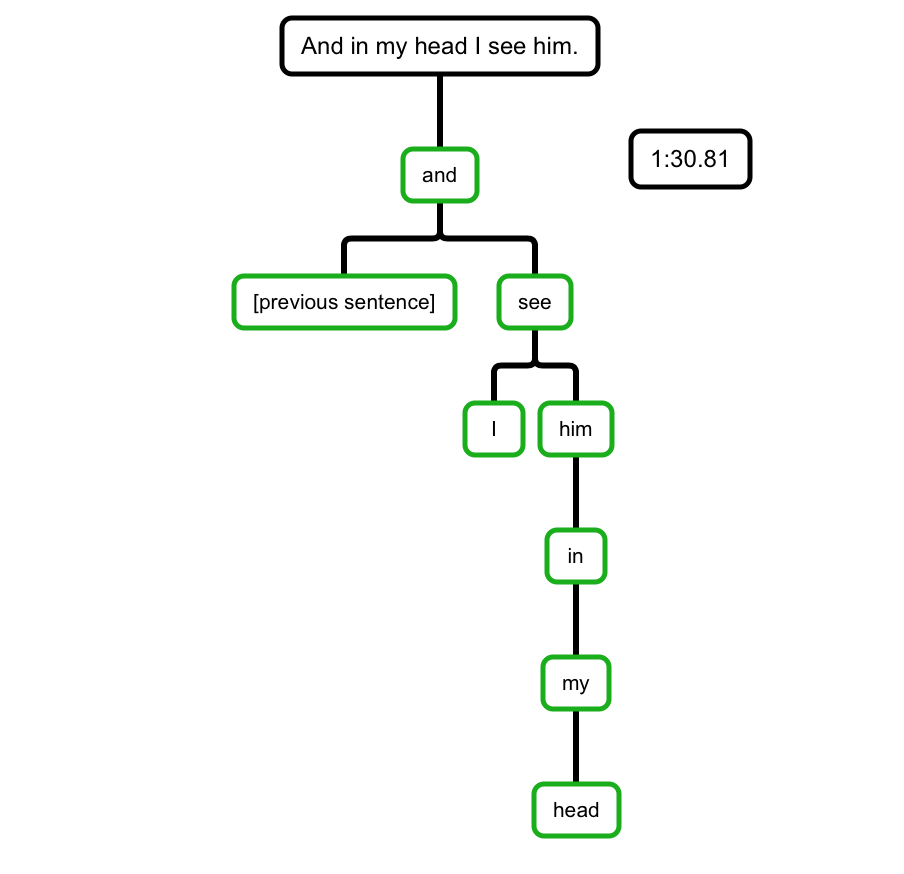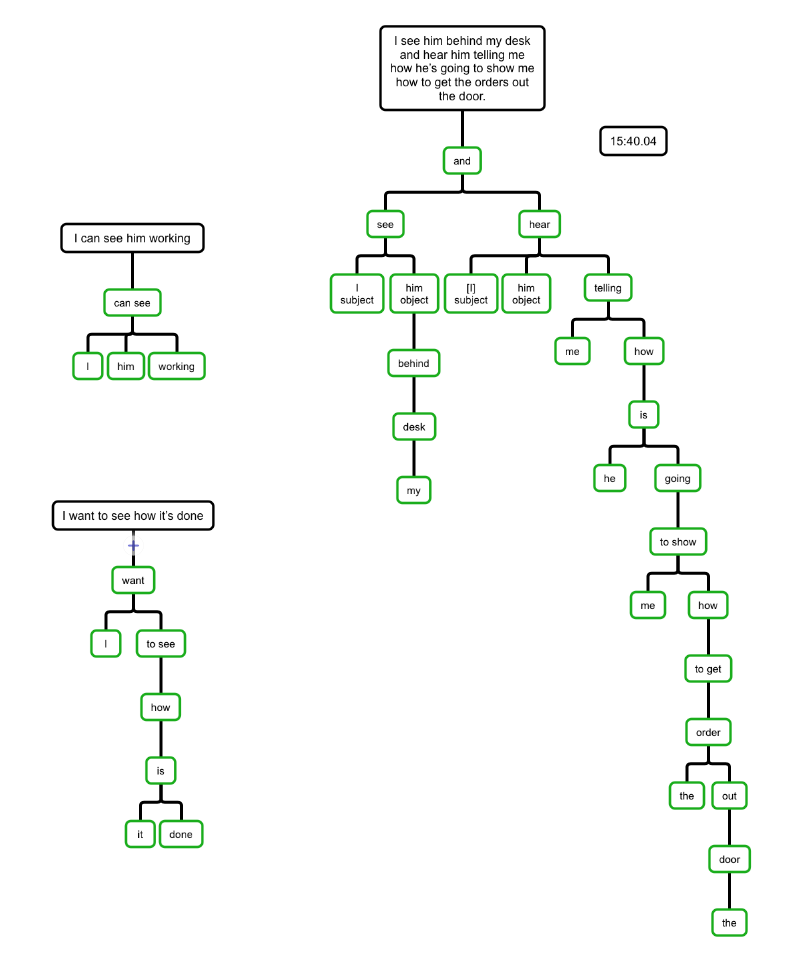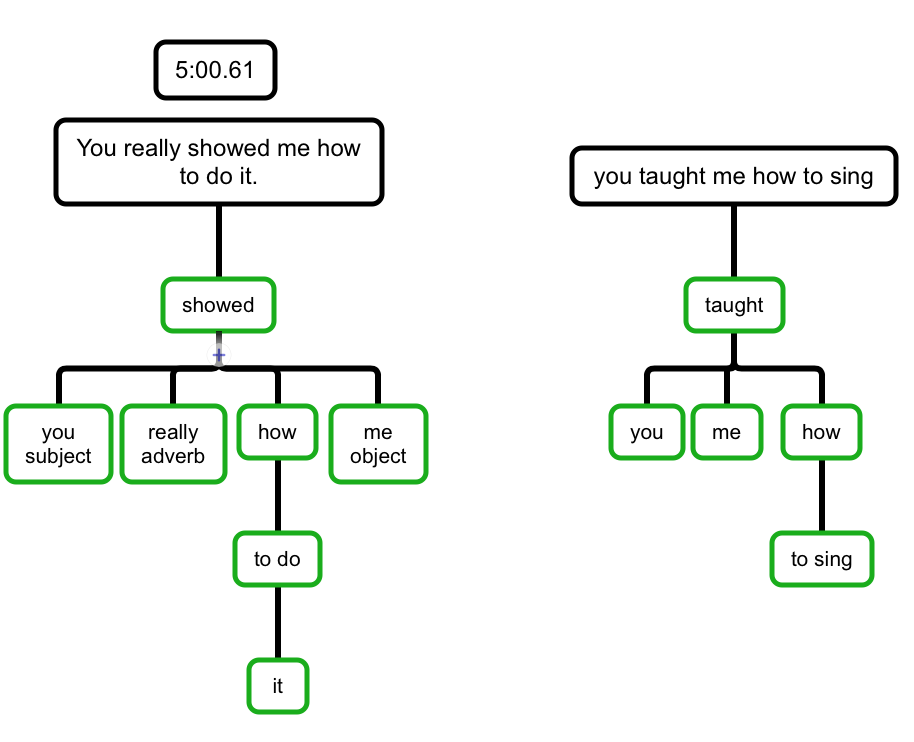Initially, I attempted to complete this project template in the main Projects category in full. I noticed how much effort that was, took a break from it, came back to it, noticed it was still hard, then went to check the Project category pinned topics for more detail on the intended use of the project template. In About the Projects category I found that Elliot says:
I unnecessarily spent too much time on setting up that project template which delayed the start of my project project. I also found that my project was more suited to the Mini Projects section.
Project Summary:
I time myself completing 5 sentence diagrams in order to investigate how much effort it takes me to do so. I then post the diagrams and times recorded here.
Goal:
Time myself correctly completing 5 sentence dependency diagrams, then post them here. Each sentence to be timed individually.
Success criteria (& optional failure criteria):
Whether I do or do not time and complete 5 sentence dependency diagrams. Also, if I find out via feedback from others that I have made an important error that misrepresents the meaning of the sentence, I’ll consider that failure.
Big picture goal, why you want to do this, or CF relevance:
Self-assessing how much effort it takes me to do sentence dependency diagrams is going to help me decide whether I need to do more practise on these before beginning other practise activities. Also, it will give me information I can use for planning future projects that involve sentences.
Plan:
Shortly I’ll be making 5 sentence diagrams from a section of Elliot’s recent article that I haven’t read fully. I am going to try and quickly pick a paragraph that at first glance appears within my skill range.
I will not stop the timer until I have decided that I think the tree accurately represents the meaning of the sentence and it is entirely correct.
I will time myself using my iPhone stopwatch. My goal here is not precision. I am looking to see if a sentence takes me under 5 minutes, 10 minutes or an hour.
Context:
Elliot commented on my Sentence Analysis Practise topic in unbounded saying:
So this made me think that I need to find a way to measure how big of a deal it is to make a few more sentences. If I knew it might take me around 5-10 minutes or less to do a sentence diagram then I know better if I could afford to take a break from reading an article to analyse a sentence without to much hassle.
